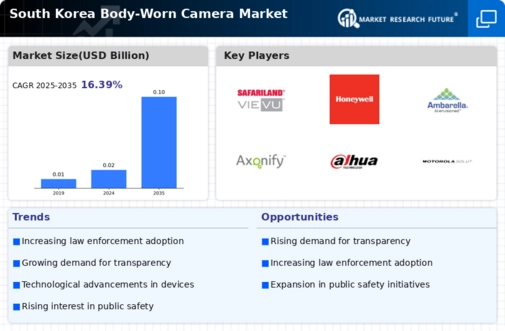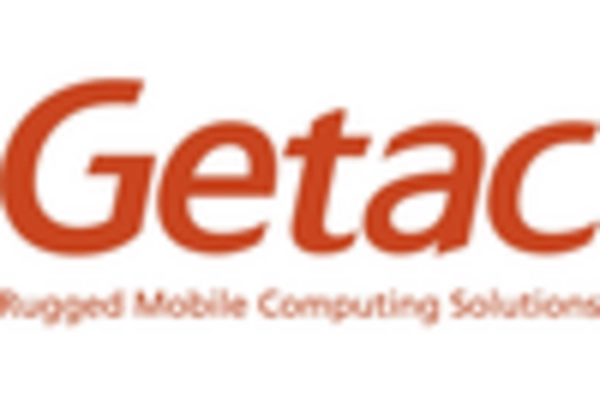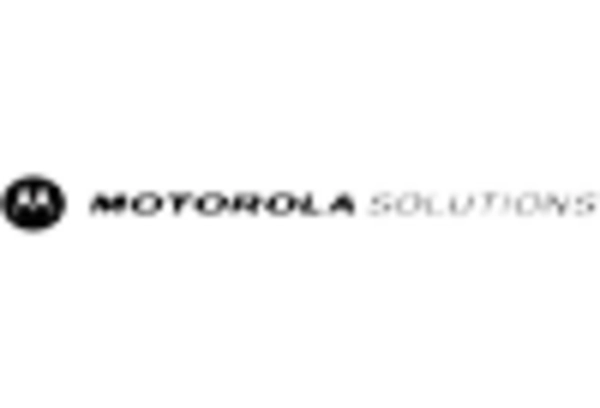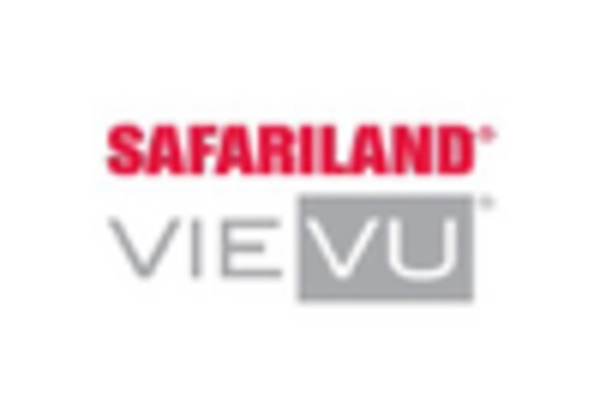The body worn-camera market in South Korea is characterized by a dynamic competitive landscape, driven by technological advancements and increasing demand for accountability in law enforcement. Key players such as Axon (US), Motorola Solutions (US), and Getac (TW) are at the forefront, each adopting distinct strategies to enhance their market presence. Axon (US) focuses on innovation through continuous product development, emphasizing integrated software solutions that complement their hardware offerings. Meanwhile, Motorola Solutions (US) leverages its extensive experience in communications technology to provide comprehensive solutions that include body worn cameras as part of a broader public safety ecosystem. Getac (TW), on the other hand, emphasizes ruggedness and durability in its products, catering to sectors that require robust equipment in challenging environments. Collectively, these strategies contribute to a competitive environment that is increasingly centered around technological integration and user-centric design.
In terms of business tactics, companies are increasingly localizing manufacturing to reduce costs and enhance supply chain efficiency. This approach not only mitigates risks associated with The body worn-camera market demands. The competitive structure of the market appears moderately fragmented, with several players vying for market share, yet dominated by a few key firms that hold substantial influence. This fragmentation fosters innovation as companies strive to differentiate their offerings in a crowded marketplace.
In October 2025, Axon (US) announced a strategic partnership with a leading South Korean technology firm to enhance its software capabilities, aiming to integrate advanced AI features into its body worn cameras. This move is significant as it positions Axon (US) to leverage local expertise in AI, potentially improving the functionality and appeal of its products in the South Korean market. Such partnerships may also facilitate faster adaptation to local regulatory requirements and user preferences.
In September 2025, Motorola Solutions (US) launched a new line of body worn cameras specifically designed for urban law enforcement agencies, featuring enhanced video quality and real-time data transmission capabilities. This strategic initiative underscores Motorola's commitment to addressing the unique challenges faced by urban law enforcement, thereby solidifying its market position. The introduction of these advanced features is likely to attract new clients seeking state-of-the-art technology to improve operational efficiency.
In August 2025, Getac (TW) expanded its product line to include body worn cameras with integrated biometric authentication features, enhancing security and user verification. This strategic development reflects Getac's focus on addressing growing concerns regarding data security and privacy in law enforcement applications. By incorporating such features, Getac (TW) not only differentiates its products but also aligns with increasing regulatory demands for secure data handling.
As of November 2025, the competitive trends in the body worn-camera market are increasingly defined by digitalization, sustainability, and the integration of AI technologies. Strategic alliances are becoming more prevalent, as companies recognize the value of collaboration in enhancing product offerings and market reach. Looking ahead, competitive differentiation is likely to evolve from traditional price-based competition towards a focus on innovation, technological advancements, and the reliability of supply chains. This shift suggests that companies that prioritize R&D and strategic partnerships will be better positioned to thrive in an increasingly complex market.

















Leave a Comment